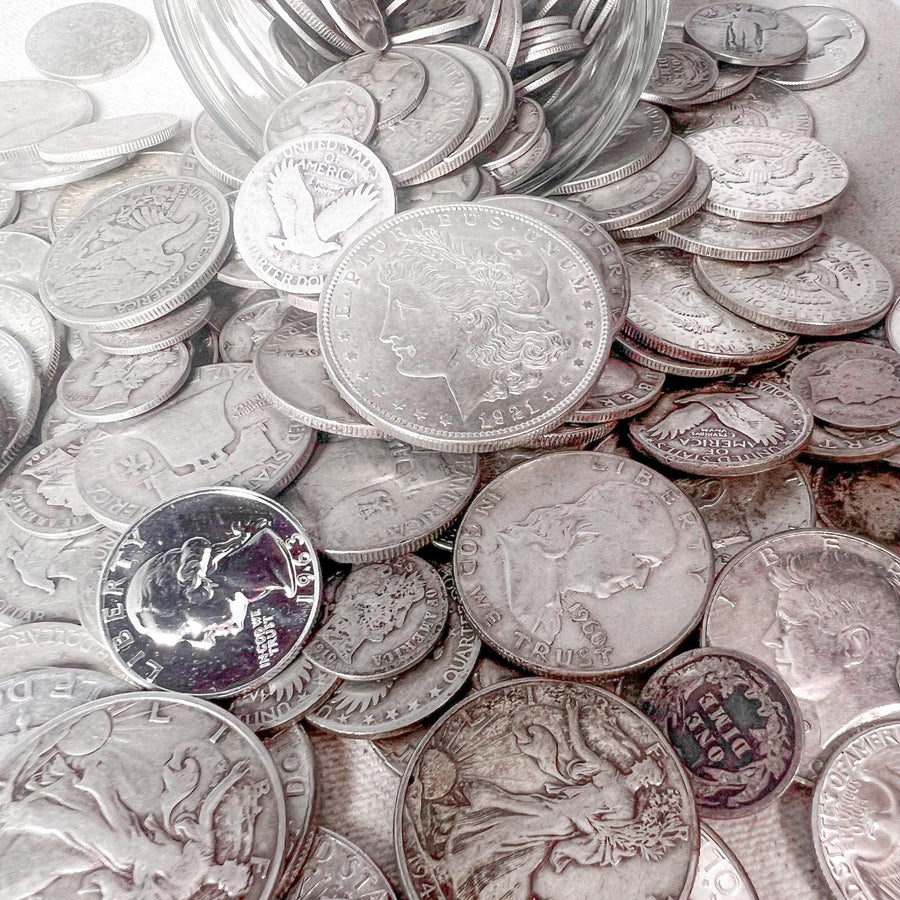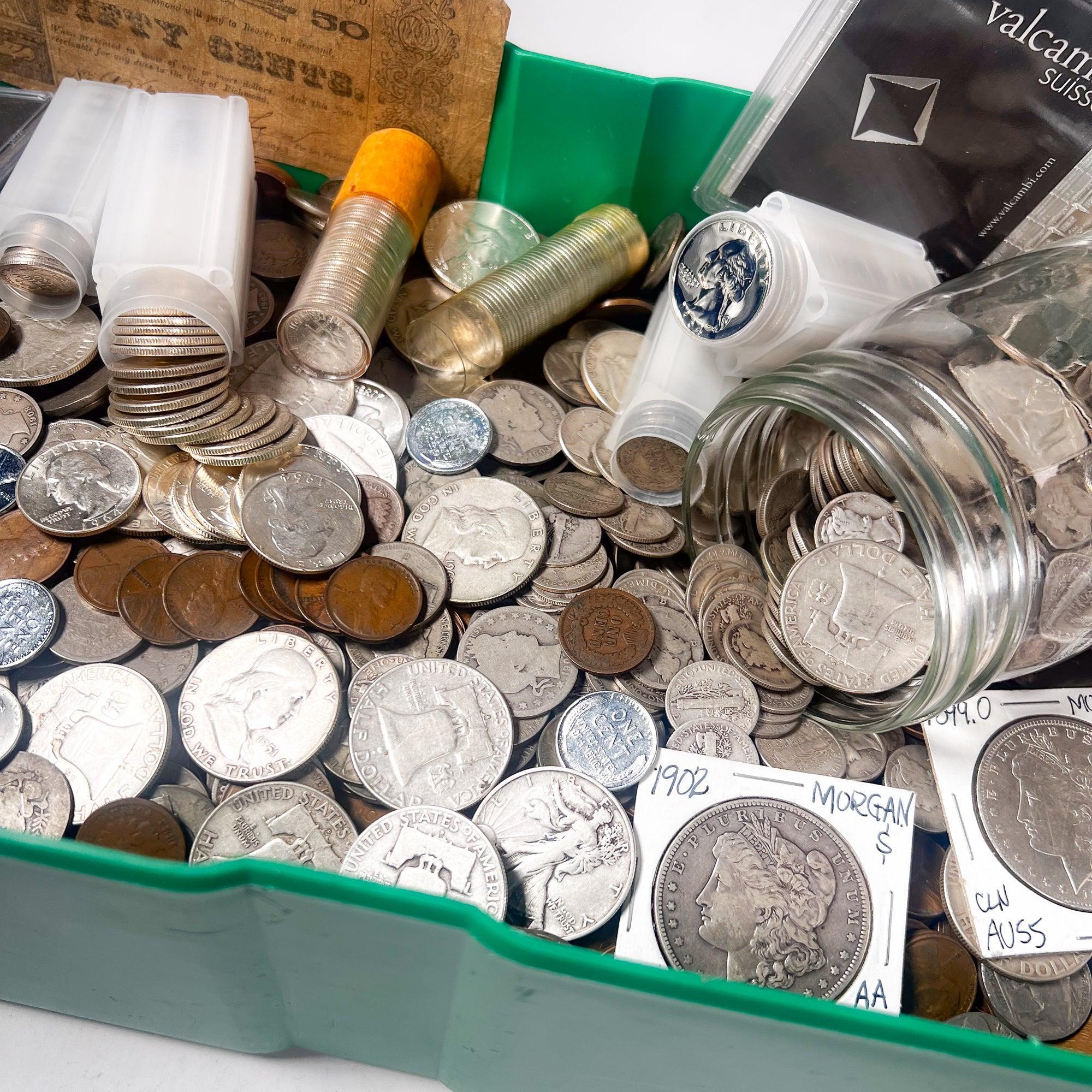Collecting History in Your Hands: The Enduring Allure of Wheat Pennies
Here at Midwest Precious Metals Exchange, we understand the thrill of discovery and the deep satisfaction of holding a piece of history. For many, that journey begins with the humble yet historically rich Wheat Penny. These iconic coins, minted from 1909 to 1958, are more than just copper; they're tangible links to a bygone era.
But what exactly makes Wheat Pennies so special, and how can you start or expand your own collection? Let's dive in!
What is a Wheat Penny?
A Wheat Penny, officially known as the Lincoln Cent (Wheat Reverse), is a one-cent coin produced by the United States Mint. Its distinguishing feature is the reverse (tails) side, which displays two stalks of wheat flanking the words "ONE CENT" and "UNITED STATES OF AMERICA." The obverse (heads) side, designed by Victor David Brenner, features a portrait of Abraham Lincoln. This design was introduced in 1909 to commemorate Lincoln's 100th birthday.
Why are Wheat Pennies Collectible?
Their age, historical significance, and the sheer joy of discovering a rare date or mint mark make them highly sought after. They offer an accessible entry point into coin collecting, appealing to both seasoned numismatists and those just starting out. The hunt for specific years, mint marks, and varieties adds an exciting challenge to the hobby.
How Can You Tell if a Penny is a Wheat Penny?
It's surprisingly easy! Simply look at the reverse side of the coin. If you see the two distinctive wheat stalks, then congratulations, you've found a Wheat Penny! If you see the Lincoln Memorial, then it's a more modern Lincoln Memorial Cent (minted from 1959-2008) or a Lincoln Shield Cent (minted from 2010-present).
What Years Were Wheat Pennies Made?
Wheat Pennies were minted from 1909 to 1958.
Are Wheat Pennies Worth Anything?
Absolutely! While many common date Wheat Pennies in circulated condition might only be worth a few cents over face value, others can be worth significantly more. Factors influencing value include:
-
Rarity: Some years and mint marks had much lower mintage figures.
-
Condition: Coins in better condition (higher grades) are always more valuable.
-
Key Dates and Varieties: Certain years and specific varieties (like the 1909-S VDB or the 1955 Doubled Die) are highly coveted and can command substantial prices.
What are Some Key Date Wheat Pennies to Look For?
Here are a few of the most famous and valuable Wheat Pennies:
-
1909-S VDB: This is arguably the most famous and valuable Wheat Penny. The "S" denotes the San Francisco Mint, and "VDB" represents the designer's initials, Victor David Brenner, which were initially placed prominently on the reverse.
-
1909-S: Even without the VDB, the 1909-S is a highly sought-after coin due to its low mintage.
-
1914-D: Another low-mintage year from the Denver Mint.
-
1931-S: A relatively low-mintage coin from San Francisco.
-
1955 Doubled Die Obverse: A fascinating error coin where the dies created a noticeable doubling of the lettering and date on the obverse.
How Do You Store and Protect Your Wheat Penny Collection?
Proper storage is crucial to preserve the condition and value of your coins. Here are some common methods:
-
2x2 Cardboard Holders: Inexpensive and widely available, these allow you to view both sides of the coin and write down information.
-
Coin Flips (Mylar): Clear plastic holders that offer good visibility and protection. Avoid PVC flips, as they can damage coins over time.
-
Coin Albums: Excellent for organizing a collection by year and mint mark, providing a neat and secure display.
-
Slabs (Graded Holders): For valuable coins, professional grading services encapsulate them in tamper-evident plastic holders, providing authentication and a numerical grade.
Where Can You Find Wheat Pennies?
The thrill of the hunt is part of the fun! Here are some common places to look:
-
Bank Rolls: Occasionally, you might find Wheat Pennies mixed in with modern cents when getting rolls from the bank.
-
Coin Dealers: Reputable dealers, like Midwest Precious Metals Exchange, often have a wide selection of Wheat Pennies, from common dates to rare varieties.
-
Coin Shows: A great place to meet other collectors and find specific coins.
-
Estate Sales and Auctions: You might stumble upon forgotten collections.
-
Online Marketplaces: While convenient, always buy from trusted sellers with good reputations.
Should I Clean My Wheat Pennies?
Generally, no! Cleaning coins, especially older ones, is highly discouraged. While it might seem like a good idea to make them "shine," cleaning can actually damage the coin's surface, remove its natural patina, and significantly decrease its numismatic value. A professional conservator might be able to help with extreme cases, but for the average collector, it's best to leave coins as you find them.
What is the Difference Between Red, Red-Brown, and Brown Wheat Pennies?
This refers to the copper's color and is a significant factor in grading.
-
Red (RD): Coins that retain at least 95% of their original red luster. These are typically uncirculated coins.
-
Red-Brown (RB): Coins with a mix of red and brown tones, indicating some exposure or light circulation.
-
Brown (BN): Coins that have largely lost their original red color and are mostly brown due to environmental exposure and circulation.
Red coins generally command the highest prices due to their pristine appearance.
Start Your Wheat Penny Collection Today!
Whether you're looking to complete a full set, find a specific key date, or simply enjoy the historical charm of these beloved coins, collecting Wheat Pennies is a rewarding endeavor. They are a tangible connection to American history, offering a glimpse into the past with every coin you hold.
Ready to add some history to your collection? Explore our selection of Wheat Pennies and other precious metals today!












